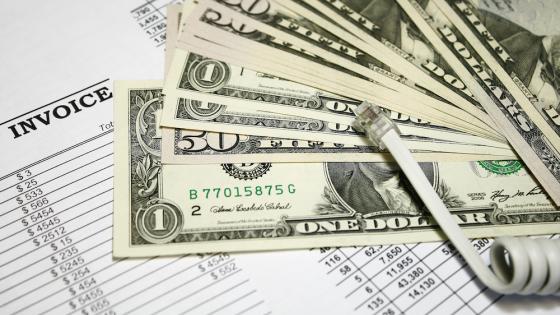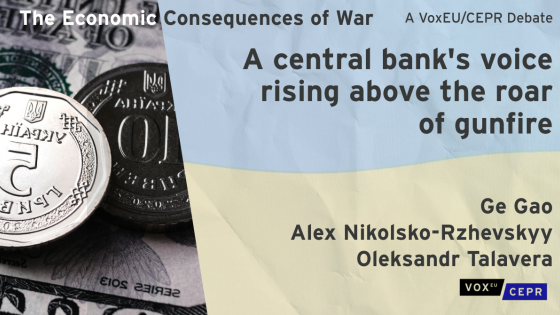President Kennedy said “Victory has a thousand fathers, but defeat is an orphan.” If the dollar’s slide is a defeat, then contrary to Kennedy’s wisdom, this defeat has a thousand fathers. Any number of observers now tell us that it was inevitable. One of my hobbies is to go back and see who saw it coming. Not from a pure forecasting perspective, but from an economic logic perspective. Who understood the key economic factors in advance and had the conviction to write them down? Marty Feldstein is one of those and this column presents my interpretation of the economic reasoning in his May 2007 paper.1
Macro and micro
Feldstein’s dollar story turns mostly on the savings/investment relationship, so a short detour is necessary.
Something that stumps every undergraduate, and not a few PhD economists, is how a nation’s trade deficit, or more precisely, its current account deficit can be two things at once: #1) The gap between national investment and national savings, and #2) the difference between exports and imports. This is not a ‘can be’ relationship; it is a ‘must be’. Number two requires no explanation; it’s just a definition. Number one follows from a line or two of national-accounts algebra. A nation’s aggregate purchase of goods is the sum of what its public and private sectors spend on consumption and investment. Its aggregate sales of goods equal the value of what its public and private sectors produce and this, in turn, is its aggregate income. Plainly, the difference between a nation’s spending and earning must be its trade balance with the rest of the world; if its aggregate purchases exceed its production/income, then some foreign goods must, on net, be coming in to satisfy the excess demand. Finally, since income must be either consumed or saved, the spending-earning gap is also the investment-saving gap; consumption cancels from both sides of the equation.
Savings in the driver’s seat
Feldstein makes a bold simplification that helps him to think clearly about the messy world. He takes US savings and investment as primitives and views the value of the dollar as the variable that adjusts to make things fit. As he writes it: “This line of reasoning leads us to the low level of the U.S. saving rate as the primary cause of the high level of the dollar.”
The logic is simple. If we take US savings and investment behaviour as data, then the supply and demand for US and foreign goods can only clear if their relative price is right (assuming unemployment is at its natural rate). In the real world, much of the adjustment of the US-versus-foreign relative prices takes place through the nominal exchange rate, at least in the short and medium term. (Goods prices in their own currency typically move sluggishly.)
So there we are. The US’s net purchase of foreign goods is predetermined by its savings/investment gap and the dollar must jump to make people happy buying and supply the necessary net flow of foreign goods.2
So far, the reasoning has been little more than a string of tautologies. The real explanation comes in understanding why US savings was so low relative to its investment.
Why the low savings?
Feldstein focuses on personal savings. “Two primary forces have been driving down the household saving rate,” he wrote, “increasing wealth and, more recently, mortgage refinancing.” (My emphasis.) Writing in May (although the first draft was given in January 2007), he states that US portfolios have done wonderfully, rising 120% in real terms since 1990; owner-occupied housing prices rose much more. US workers thought: ‘With my nest-egg rising at this pace on autopilot, why save anything at all?’ And they didn’t. Personal saving rates fell since the 1990s, dropping more sharply from mid-2003 to -1.5% of disposable income. In other words, Americans weren’t just not saving, they were actually consuming some of their stock of savings each year.
A hefty share of this dis-savings came through mortgage refinancing (two-thirds of American households own their own residence). With the Fed holding interest rates to 1% and promising to raise it only slowly, it made sense to refinance. Americans would pay off their existing mortgage by borrowing at new lower interest rates. This is just plain financial good-sense – something that even Warren Buffet would approve of – but the rising home value meant that Americans had more valuable collateral in their hands (the house itself). This made it possible, if not wise, for them to borrow more than they needed to pay off the mortgage. ‘Taking money out of the house,’ was what it was called.
Why relatively high investment?
The other side of the savings-investment gap also needs explaining. Feldstein writes: “the rate of investment continued at a relatively high level because the fall in saving did not cause the rate of interest to rise.” This happened due to what others have called the global glut of savings. “Three sources of such capital inflow have been particularly important. First, the Chinese government stabilized the exchange rate between the dollar and the renminbi by buying large volumes of US Treasury securities, thus keeping down the interest rate on those bonds. Second, the Bank of Japan has pursued a low interest strategy, with the short rate close to zero. This encouraged private individuals in Japan and abroad to borrow yen, sell the yen for dollars, and invest the funds in dollar securities. This ‘yen carry trade’ kept US rates lower than they would otherwise have been. And the rapid rise in the price of oil has created large amounts of investable funds in the oil producing countries which have been temporarily invested in dollar securities.”
Dollar drop: it was the housing crisis
Now comes my favourite part of the logic. Feldstein not only calls the dollar’s drop, he links it to developments in the US housing market. True, his logic did not lead him to predict the subprime crisis, but that is more a matter of how, not what.
He notes that bringing down the trade deficit will require a closing of the saving/investment gap. He wrote that this would come mostly from higher savings: “The household saving rate will rise because the two primary forces that have driven savings down will come to an end. First, the sharp rise in wealth caused by abnormal gains in share prices and house prices will not continue. Home prices are already beginning to decline and the prices of stocks are not likely to outperform earnings in the future in the way that they did in the past. Second, the mortgage refinancing will not continue to generate spendable cash for households as it has in the past. The decline in mortgage refinancing has not yet begun. But at a certain point there will be very few households with mortgage rates that exceed the rates available on new mortgages. There will also no longer be a stock of net equity that can be accessed by borrowing.”
The rest of the essay discusses why the foreign exchange market didn’t anticipate the adjustment that Feldstein said must occur. His reasons are less remarkable – Asian official intervention and myopic investors.
Back to the future
Feldstein’s insight looks pretty good in hindsight, but his foresight is not yet all behind us. He also considers two ways that the whole thing could unwind and what they mean for the US macroeconomy.
“The primary risk going forward,” he wrote, “is that the decline of the dollar and the rise of the saving rate will happen at different speeds, leading to domestic imbalances.” His second scenario is looking best at the moment. Here it is.
If the US saving rate rises without a dollar drop, there is no narrowing of the trade gap to offset the closing saving/investment gap. Aggregate demand falls and we get a US recession or at least growth deceleration. More to the point facing us today, Feldstein notes that since a falling dollar stimulates net exports only with a lag, avoiding a slowdown in US aggregate demand growth would have required the dollar to fall before the saving rate rises, maybe a couple of quarters earlier. Or, as he puts it: “the domestic weakness will occur unless the dollar decline precedes the rise in saving.”
Conclusions
If you follow Feldstein logic, keep an eye on US saving and investment if you want to know how low the dollar must go.
Footnotes
1 Feldstein, M (2007). “Why is the dollar so high?” NBER WP, 13114, May 2007.
2 All this reminds me of the undergraduate lectures I sat through in 1977 (Andre Sapir and Rachel McCulloch were the profs). Back then, one of the leading exchange rate models – the income-elasticity approach – took the trade gap as the ‘horse’ and the ‘exchange rate’ as the ‘cart’. The whole, Dornbusch over-shoorting-uncovered-interest-rate parity logic was not fully accepted since private trade in financial assets was fairly modest.


